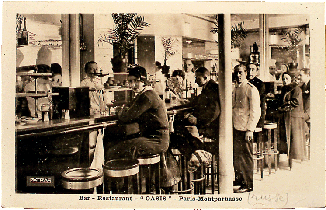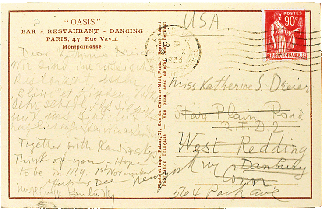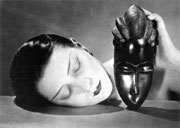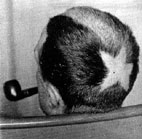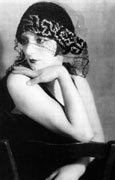click to enlarge
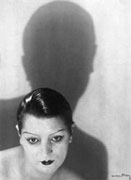
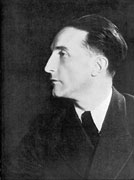
1.Man Ray,Kiki, 1924
2.Marcel Duchamp à Paris,
1931
In October 1933 Duchamp met with Nina and Wassily Kandinsky in Paris. They knew each other through Katherine Dreier who was close to both artists. Duchamp and the Kandinskys decided to send her a postcard. Dreier received the message in New York and the postcard eventually ended up in her archives which, after her death, became part of the Beinecke Rare Book and Manuscript Library at Yale University.
Almost sixty-five years later, in the summer of 1998, I came across the postcard among the hundreds of pages of correspondence between Dreier and Duchamp. In retrospect it’s hard to say if I found out immediately what the problem was in the image of the postcard (showing a bar-restaurant in Paris). Probably I didn’t. I made a copy that accompanied me back to Europe. Only weeks later, while concentrating on the image, it became clear to me that one of the figures in the postcard could well be Marcel Duchamp himself.
click to enlarge

Front view of Duchamp’s postcard, 1933
Back view of the Duchamp’s postcard, 1933
(For full text, click to see the enlargement)
As a matter of fact, this discovery opened a whole new perspective. There is a strong similarity between the profile of the man in the postcard and some Duchamp photographs we know from 1919-1920, showing him with a short haircut. I found out that the bar-restaurant Oasis really existed, but the problem is that the place was only founded in the late twenties. There are only two ways of dealing with this contradiction in time: whether all this is based on a remarkable coincidence or whether the postcard is the product of an extremely precise collage.
click to enlarge
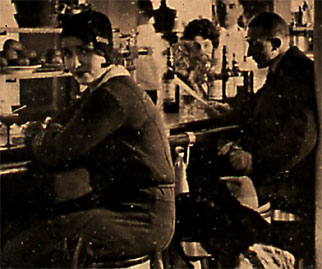
Close-up View of the Postcard, 1933
In support for the last thesis, one could consider that the postcard must have been produced between 1928 and 1933. During this period Duchamp worked on the Green Box. This project included on the one hand the fact that he had to dig in his old boxes and on the other hand that he got involved with printing and photography.
Another consideration makes it hard to believe that we deal with a coincidence.
At one point, the bar-restaurant Oasis was owned by nobody else than Man Ray’s favorite model Kiki de Montparnasse. Billy Klüver, who wrote an extensive study on Kiki, believes that the woman in the main focus of the postcard is Kiki herself. During the Harvard symposium “Methods of Understanding in Art and Science: The Case of Duchamp and Poincaré” (November 5-7, 1999) Arturo Schwarz confirmed that, in his opinion, the two people sitting on the stools at the bar of Oasis are indeed Marcel Duchamp and Kiki de Montparnasse.
Berlin, April 2000.
click to enlarge



